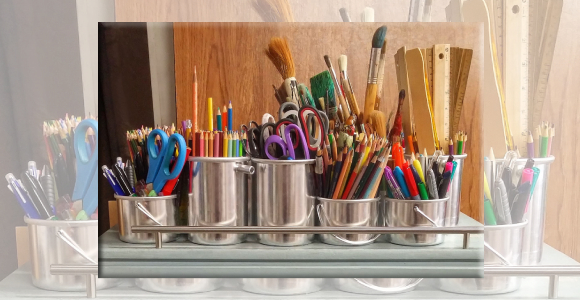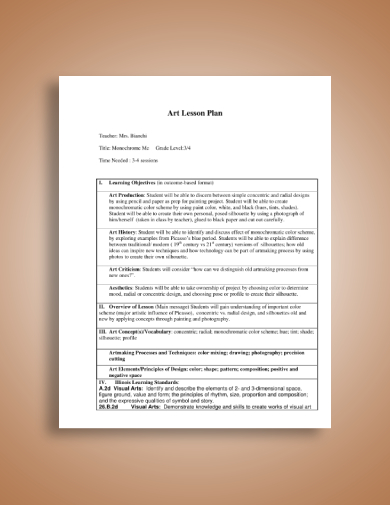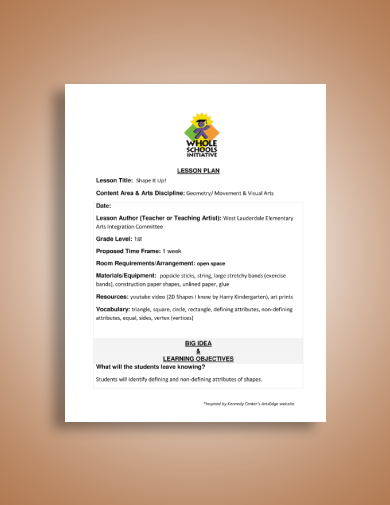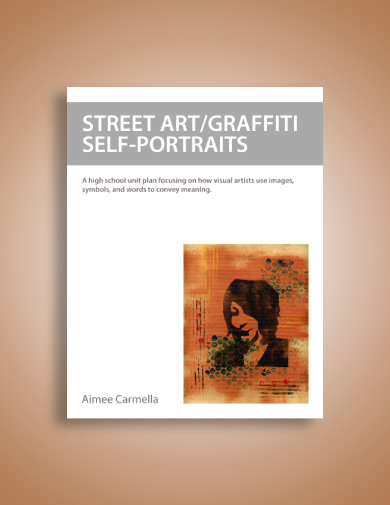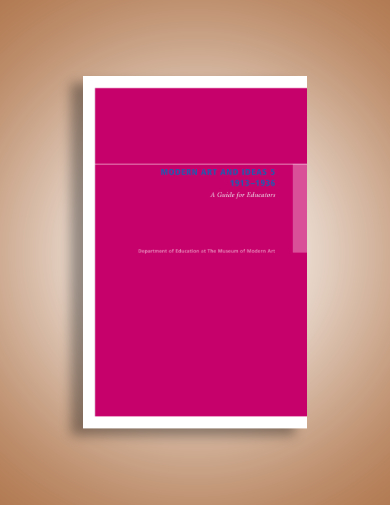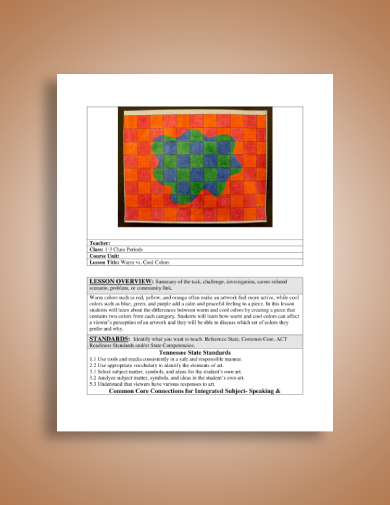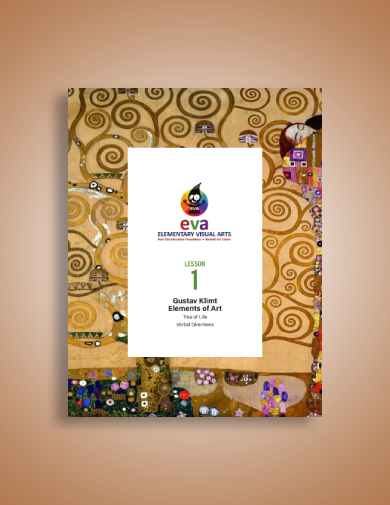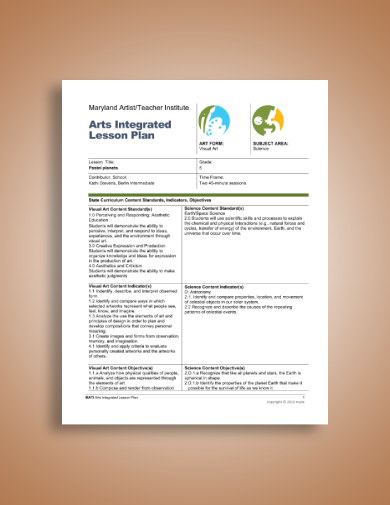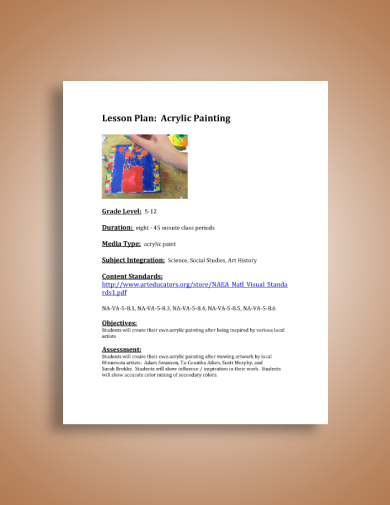10+ Art Lesson Plan Examples to Download
Arts encompass a wide range of topics including visual arts, performing arts, literature, and other interactive media. We might not notice it, but art is everywhere, it is part of our lives, and we are always surrounded with arts—the beds where we sleep in, the buildings where we work, and even the performance we see in an auditorium. All these are planned, designed, and created using the basic knowledge of arts. That’s how important art is. Hence, in this article, we will be focusing on the most commonly recognized art, the visual arts, as well as art lesson plan templates and examples, which you can find in the next section.
Art Lesson Plan Templates and Examples
1. Simple Art Lesson Plan
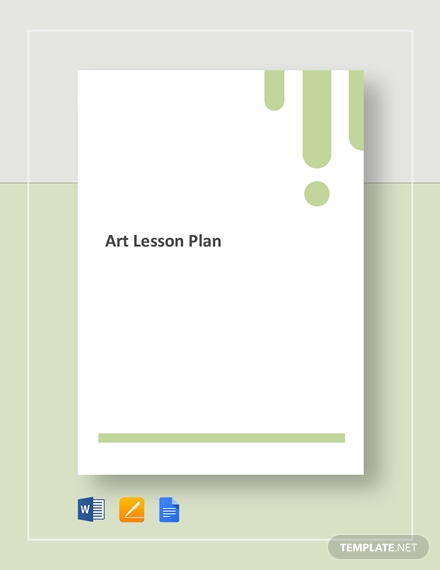
In creating a flow for your art classes, it is important that you organize them beforehand so you will know the flow of your lesson and prepare for your teaching strategies ahead of time. Through this simple art lesson plan, you can easily organize your thoughts with ease because this is easy to edit and customize according to your specific needs. You can integrate your desired activities or assignment in this lesson plan through the use of computer applications or programs that are able to open Google Docs, MS Word, and Pages file formats.
2. Monochrome Art Lesson Plan
This monochromatic art lesson plan contains a detailed discussion relating to the traditional and modern versions of a silhouette and the monochromatic color scheme by examining the artworks from Picasso’s Blue Period. Moreover, it aims to let students understand concentric versus radial design, hues, tints, and shades. The learning experiences that it provides to students involve three steps: motivation, introduction, and instruction. This is a very simple plan with the following format: learning objectives, overview of lesson, art concepts, learning standards, learning experiences, modifications, resources, assessment, and rationale.
3. Visual Art Lesson Plan
In this visual art lesson plan, the main topics being discussed are Illustrating a Moment in Time, Perfect World Collage, Combining Illustrations, Illustrate with a Monoprint, Up Close and Personal, Draw What You Feel, and Value in Art. The formats for all the topics are closely similar, including the following: objectives, materials, prior knowledge and experiences, teaching procedures, indicators of success, and follow-up activities. In every topic, there is a recommended tale to be discussed to provide a more comprehensive discussion.
4. Geometry and Arts Lesson Plan
This is a very detailed lesson plan that elaborates the flow of the art lesson in a clear and concise manner, thus perfect and fitting for grade school students. Firstly, it presents the learning objective, then the summary, lesson instruction, standards and principles, and lastly, the notes of the teachers. In this lesson plan, combined are the principles of geometry and art with shapes being the common factor of the two. It also clearly outlines the related standards and principles so that students can easily understand the lessons.
5. Street Art Lesson Plan
Street art, also known as graffiti or independent public art, is a visual art that is created in public locations and is a form of artistic expression. We often see graffiti on the sidewalks as these are the most favorite spots for graffiti artists to showcase their work. However, many would consider graffiti as vandalism. Why is this so? Is graffiti against the law? Is it a valid form of art? All these questions are answered and clarified in this lesson plan. Along with lessons about graffiti are lessons on how to correctly photograph a portrait, how to alter images in Photoshop, and a lot more.
6. Modern Art Lesson Plan
This lesson plan explores the history of modern art through The Museum of Modern Art’s rich collection. The lessons presented here are accompanied by writing, appropriate research, and art activities which help encourage students to make connect visual arts with other disciplines. This also serves as a guide to understand Dada and Surrealism, the two most popular artistic, literary, and intellectual movements in modern Western art.
7. Warm vs. Cool Colors Lesson Plan
The basic color theory that every artist must know in order to build a strong foundation in colored art is the warm and cool color theory, which can be explained using the color wheel. Understanding the color theory is important because you will know what are the colors that would complement with each other and what are the appropriate colors for the foreground, background, etc. Warm colors include red, red-orange, orange, yellow-orange, yellow, and yellow-green, while warm colors include green, blue-green, blue, blue-violet, violet, and red-violet. More discussions related to the color theory are presented in this lesson plan.
8. Elements of Art Lesson Plan
Line, shape, form, value, space, color, and texture—these are the fundamental elements of arts that every artist must basically know. In this lesson plan, not only the elements of arts are discussed but also Gustav Klimt, a prominent Austrian symbolist painter, and his artworks are also presented and explained. Students will be taught about Klimt’s decorative style of art as his works typically include women with elaborate gowns, blankets, and landscapes.
9. Pastel Planets Lesson Plan
The objective of this lesson plan is to help students demonstrate the ability to perceive, interpret, and respond to ideas, experiences, and the environment through visual art. In connection with the science lesson about planets, the students are expected to create a pastel drawing based on the planets and the solar system, using the elements of space also referred to as perspective in art, the value of the planets by determining the light source, and color theory which is already discussed above.
10. Acrylic Painting Lesson Plan
Acrylic is a medium that is commonly used because it is cheaper and easy to use compared to other media, such as oil and watercolor. Because of this, a lot of artists and aspiring artists wanted to learn more about this medium. Hence, in this lesson plan, listed are the daily activities and lessons about acrylic painting for a duration of 8 days. The discussion will also include the presentation of the artworks by local Minnesota artists, which will help inspire the students to make their own acrylic painting.


